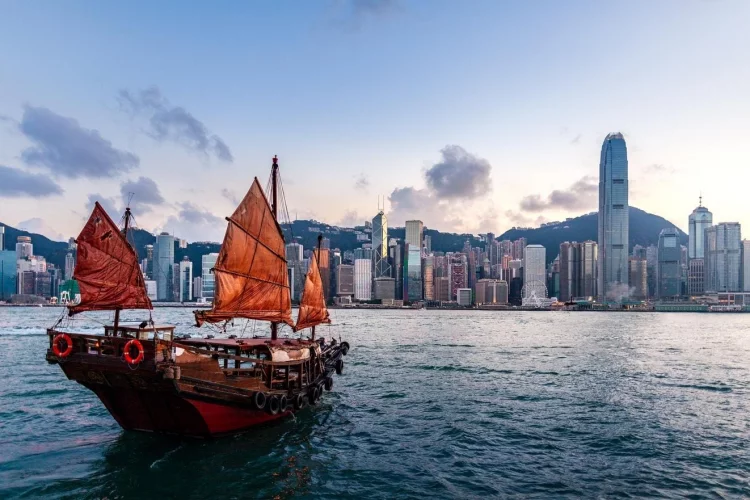Asia Cruises: How To Plan A Very Different Cruise Vacation
Combining the thrill of discovery with the comfort and security of luxury travel, it’s no surprise that cruising is a popular way to travel in Asia.


Imagine spending your vacation days exploring ancient temples in Cambodia, indulging in the vibrant street food culture of Vietnam, or exploring the neon-lit skylines of Japan’s cities—all while enjoying the comforts of home.
That’s the reality of cruising in Asia, where every itinerary is packed with rich cultural experiences, breathtaking landscapes, and historic traditions that are a world away from the beach clubs and party atmosphere of Caribbean cruises.
As they seamlessly combine the thrill of discovery with the comfort and security of luxury travel, it’s no surprise that cruising is a popular way to experience Asia.
Emma Le Teace runs the popular YouTube channel and website Emma Cruises. She has twice visited the region on cruise ships and says she understands the appeal: “Cruising makes visiting the region easy. On my recent cruise, we spent one day in Taiwan, one day in Vietnam, overnighted in Hong Kong, and ended up in Japan. To arrange a trip like that independently is difficult and very expensive.”
But from knowing which itinerary to pick including the must-do destinations to what to expect from the onboard experience, there is so much to know about Asian cruises before you book.
Understand the types of Asia cruises
Just as Mediterranean cruises vary from a seven-night loop around classic cities such as Barcelona and Marseille, to a multi-week exploration of the Dalmatian coast and Greek islands, Asia cruises are many and varied.
Because of the vast size of the region, shorter round-trip itineraries focus on a sub-region of Asia, such as 5-day Southeast Asia cruises from Singapore, or a China-Japan roundtrip.
But as Le Teace explains, due to the vast size of the region, many Asian cruise itineraries are longer and unique: “You find a lot more one-way and repositioning itineraries than in Europe or America. Segments of world cruises sold as shorter itineraries are also common.”
Her recent 12-night Singapore to Tokyo cruise on Royal Caribbean’s Spectrum of the Seas called at Nha Trang, Vietnam, Hong Kong, Nagasaki, Kumamoto, and Kagoshima.
Although known as a budget cruiser, Le Teace recommends booking excursions on Asian itineraries to get the most out of the trip: “We saw so much more of rural Japan this way, visiting farms, temples, and shrines that were an hour or so apart. It’s possible to do your own thing in ports, but the language barrier in some destinations makes it harder.”
River cruises are also an option to explore the region, and arguably lead to a more authentic experience of rural Asia. The most common routes start in Ho Chi Minh City and explore the networks of rivers and islands that make up the bustling Mekong Delta, home to floating markets and traditional villages.
Floating markets are among the sites you'll see on an Asian river cruise.
gettyAmaWaterways, Avalon Waterways, and Viking River Cruises are among the leading names in the region. The latter’s 15-day itinerary includes time in Hanoi and Ho Chi Minh City, together with several days exploring rural Vietnam and the villages and temples of Cambodia along the Mekong.
A different onboard experience
Even when cruising with an established American line such as Royal Caribbean, Le Teace says you should expect a different onboard experience to reflect the different guest demographic. Although it varies depending on the line and time of year, guests from Asia are likely to make up a large proportion of the total passengers.
Multilingual signs (English and Mandarin Chinese) are the norm, while the main dining rooms and buffet restaurants offer a much more international selection, although American classics are always available.
Less obvious cultural differences also play a role in the onboard experience. Le Teace highlights the location of Royal Caribbean’s popular takeaway pizza outlet, Sorrento’s, as one example: “It was located as part of the buffet because of the different dining culture in Asia. In the U.S. or Britain, grabbing a slice of pizza and eating while walking is totally normal. In parts of Asia such as Japan, that’s considered rude.”
Guests on an Asia cruise should also expect a lot more paperwork that must be completed onboard before disembarkation. This could be as simple as a form, or it could involve visiting a set place at a set time onboard to have your passport and papers checked by local immigration officers.
A strong recommendation
Despite the challenges and cultural differences, Le Teace is in no doubt when recommending cruising in and around Asia.
Having taken over 60 cruises, she says her two Asian itineraries were her all-time favorite cruises. “If people only do one cruise in their entire life, it should be an Asian cruise,” she confirms.

 oujisama
oujisama 












